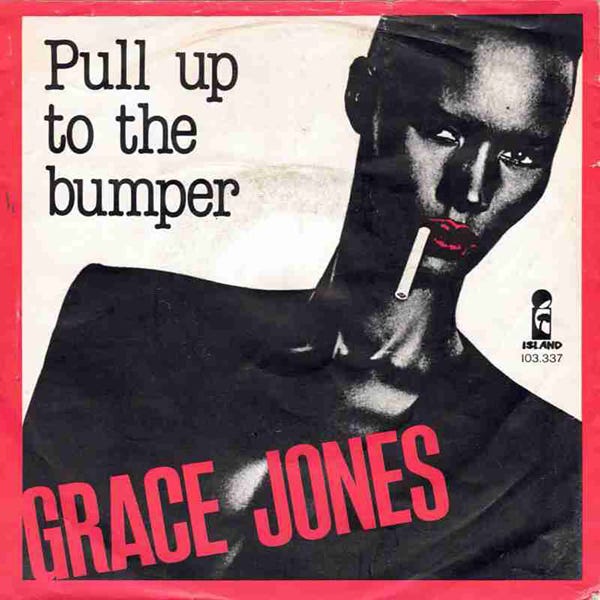🚗💋 Grace Jones – Pull Up to the Bumper: How a Jamaican Rebel Rewired the Dancefloor
The Twelve Inch 187 : Pull Up To The Bumper (Grace Jones)
It was September 27, 1981, and a bunch of us had splashed out on (rather expensive, as I recall) tickets for Grace Jones’ concert in Antwerp. Grace was our hero. Nightclubbing, her fifth album, had dropped just before summer, and by then you couldn’t escape her on the radio. “I’ve Seen That Face Before (Libertango)” had topped the Belgian charts in May and June, and by august the third single, “Pull Up to the Bumper,” was everywhere.
We went in with sky-high expectations. Sure, the concert hall wasn’t exactly the sexiest venue in town, and dancing wasn’t allowed, you had to sit down, but that didn’t matter. We were about to see Grace Jones live.
Our seats were on the balcony, great view, but not exactly close. When she appeared on stage wearing only a jacket (just like on the Nightclubbing cover) and seemingly nothing underneath, one of my friends grabbed his binoculars. When he realised Grace was indeed wearing nothing visible beneath the jacket, he started shouting that anyone who wan…
Keep reading with a 7-day free trial
Subscribe to The Twelve Inch to keep reading this post and get 7 days of free access to the full post archives.


